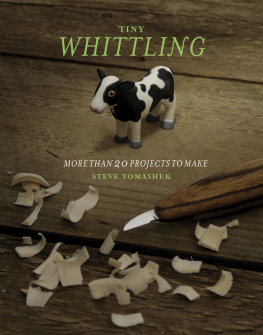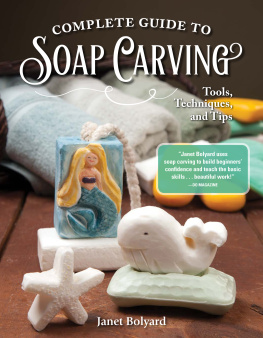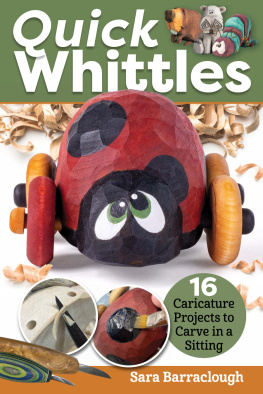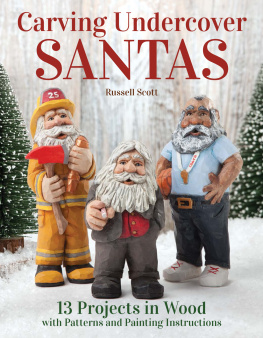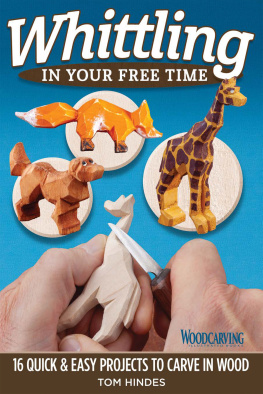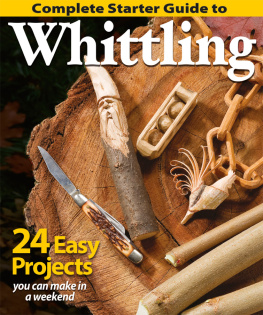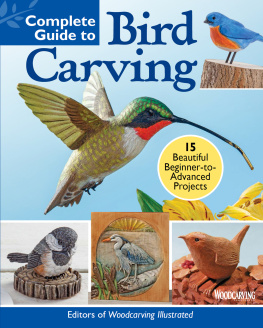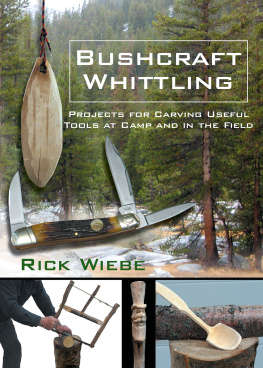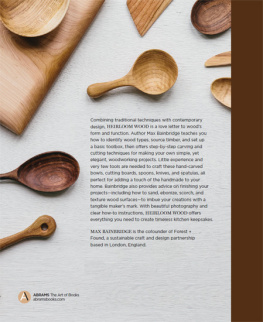


Copyright 2012 by Ivy Press Limited
First published in the United States of America in 2012 by
Chicago Review Press, Incorporated
814 North Franklin Street
Chicago, Illinois 60610
ISBN 978-1-61374-496-3
All rights reserved. No part of this book may be reproduced or transmitted in any form or by any means, electronic, mechanical, photocopying, recording, or by any information storage-and-retrieval system, without written permission from the copyright holder.
This book was conceived, designed, and produced by
Ivy Press
210 High Street, Lewes, East Sussex, BN7 2NS, UK
CREATIVE DIRECTOR Peter Bridgewater
PUBLISHER Susan Kelly
DESIGN & ART DIRECTION Wayne Blades
PROJECT EDITOR Judith Chamberlain-Webber
DESIGNER Andrew Milne
PHOTOGRAPHER Andrew Perris
Color origination by Ivy Press Reprographics Printed in China
10 9 8 7 6 5 4 3 2 1
Contents
CHAPTER 1
Getting Started
CHAPTER 2
Practice Projects
CHAPTER 3
Beginner Projects
CHAPTER 4
Intermediate Projects
CHAPTER 5
Advanced Projects
INTRODUCTION
The impulse to create sculpture through carving goes all the way back to the earliest humans. It continues today in the countless numbers of whittlers who are drawn to take up a knife and put it to a piece of wood.
This book has been written for those who are new to whittling. Anyone can learn to whittle by simply following the step-by-step instructions for carving materials you can find in your kitchena bar of soap, for instance, and root vegetables, such as carrots and turnipsalong with a common vegetable paring knife.
Once youve mastered a basic understanding of three-dimensional sculpting in these materials, this book gives you the information youll need to start carving wood Advice includes selecting a knife and keeping it sharp, choosing the right wood, and basic carving techniques.
From there, this book offers progressively more challenging projects with detailed instructions, which are accompanied by step-by-step photographic illustrations and helpful tips along the way
Designed to coach the beginner from initial projects that will train and strengthen the hands to more difficult projects that continue building skills, the ideas presented in Tiny Whittling will allow you to develop and explore your own unique style of carving.

ABOUT THE ARTIST
Steve Tomashek grew up in Winona, Minnesota. He is a graduate of Indiana University with a degree in World History and Education. Partway through his university years, his familys house burned to the ground, and with it, his grandfathers woodworking tools were destroyed.
As a way of coming to terms with the loss, Steve bought himself a knife and carved a chess set. The experience led him to take up carving as a hobby, and after several years of practice, the hobby turned into a full-time career. Fifteen years and thousands of carvings later, his work has a devoted following around the world through his website ministeve.com and from art fairs and galleries in the Midwest and East Coast of the United States as well as Europe. In collaboration with the artist Glenn Gordon, he also stages and photographs miniature tableaux of his carvings. He is now bringing his carvings even further to life through his video stop-motion animations, which he writes, produces, directs, and does all the sound effects for himself. He even organizes the catering

CHAPTER 1
Getting Started

CARVING MATERIALS
The main type of wood I use for carving is American basswood (also known as American linden). Basswood is used for all the carving projects in this book because it is fairly soft and lightweight, so it is relatively easy to carve. However, there are many other types of suitable wood available and, as you progress with your carving, you may want to try some alternatives. Lets take a closer look at some of them.

AMERICAN BASSWOOD
Basswood has a straight grain, is dense, and generally has no knots or irregularities. The wood is not scarce or threatened. Its classified as a hardwood because it is deciduous, but if it is dried correctly, it is actually soft and easy to carve. It can be bought from sawyers, carving supply stores, or specialty wood suppliers. Dont confuse basswood with balsa wood, which is often used for model building and is generally too light and too soft for carving.

BOXWOOD
The other primary carving wood is boxwood, which also has a straight grain and no knots. Its important for the grain to be predictable if youre working on small details. Boxwood commonly grows as a shrub, and the large shrub branches are fine for carving, but in some places it also grows as a tree. Its slow growing, which is why the grain is tight, and this means it holds detail well in smaller pieces. Its harder to carve, so practice with basswood first.

HOLLY
Holly is harder than basswood, but it is not as hard as boxwood. Its very strongcomparable to birch or maplebut is not so easily available. Its a white wood, but sometimes it also has grayish streaks, which can make it very attractive. Its more difficult to carve than basswood, but it holds details well.

YELLOW CEDAR
Cedar, pine, and firs are not ideal for carving unless they are slow grownthe slower the growth, the tighter the grainand even then, the grain can be wavy. Old or slow-grown yellow cedar is harder to find, but its a very pretty wood with a pleasant smell.

SWISS PEAR
Nut and fruitwoods such as walnut, pecan, apple, and Swiss pear are hardwoods; they are comparable to boxwood, but they tend to have a lot of knots. You can still use them, however, if you avoid the knotty areas. Swiss pear has a particularly attractive color, close to cherry (which can also be used for carving).


